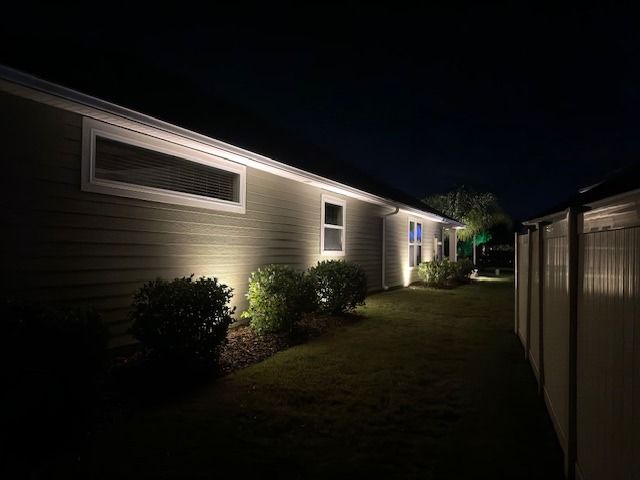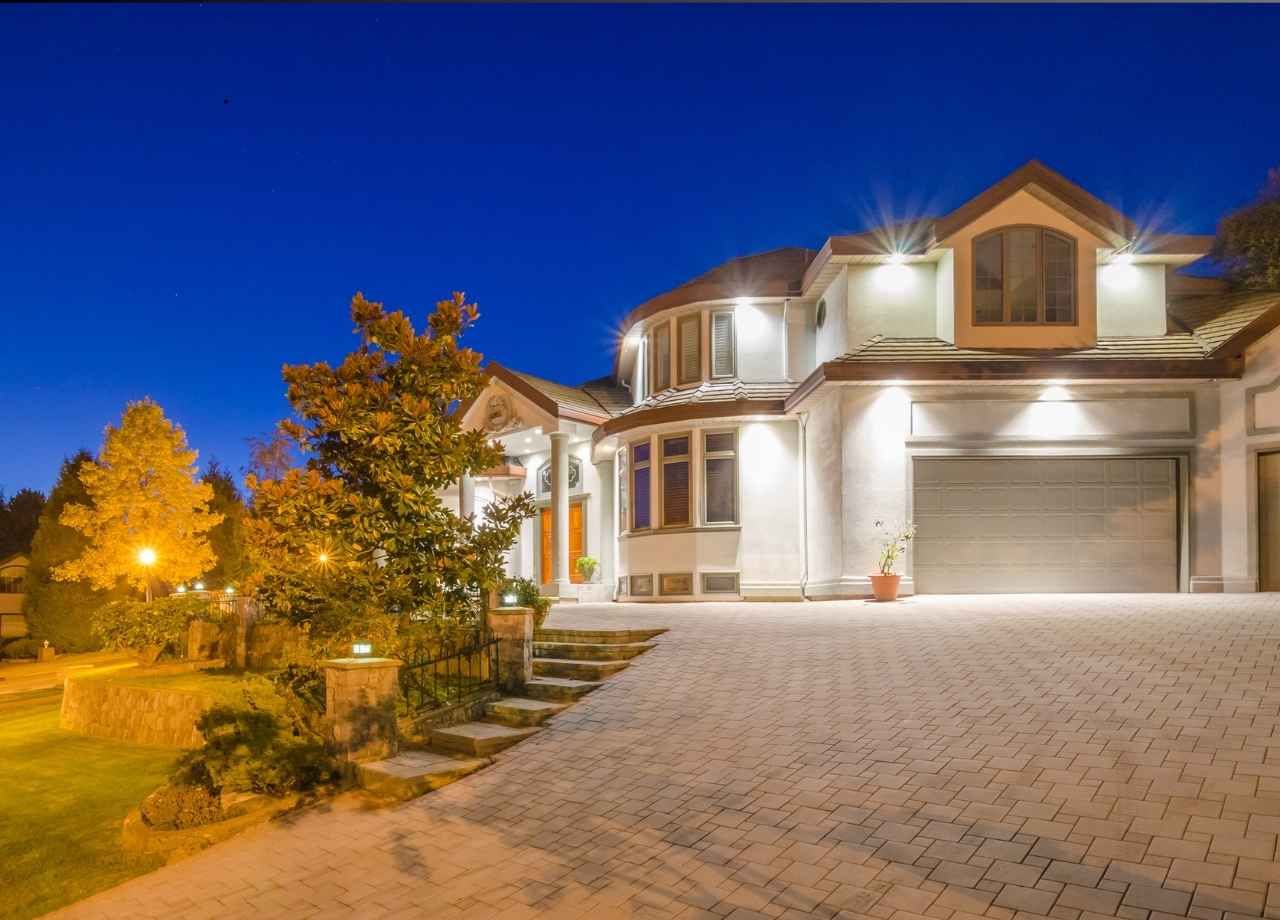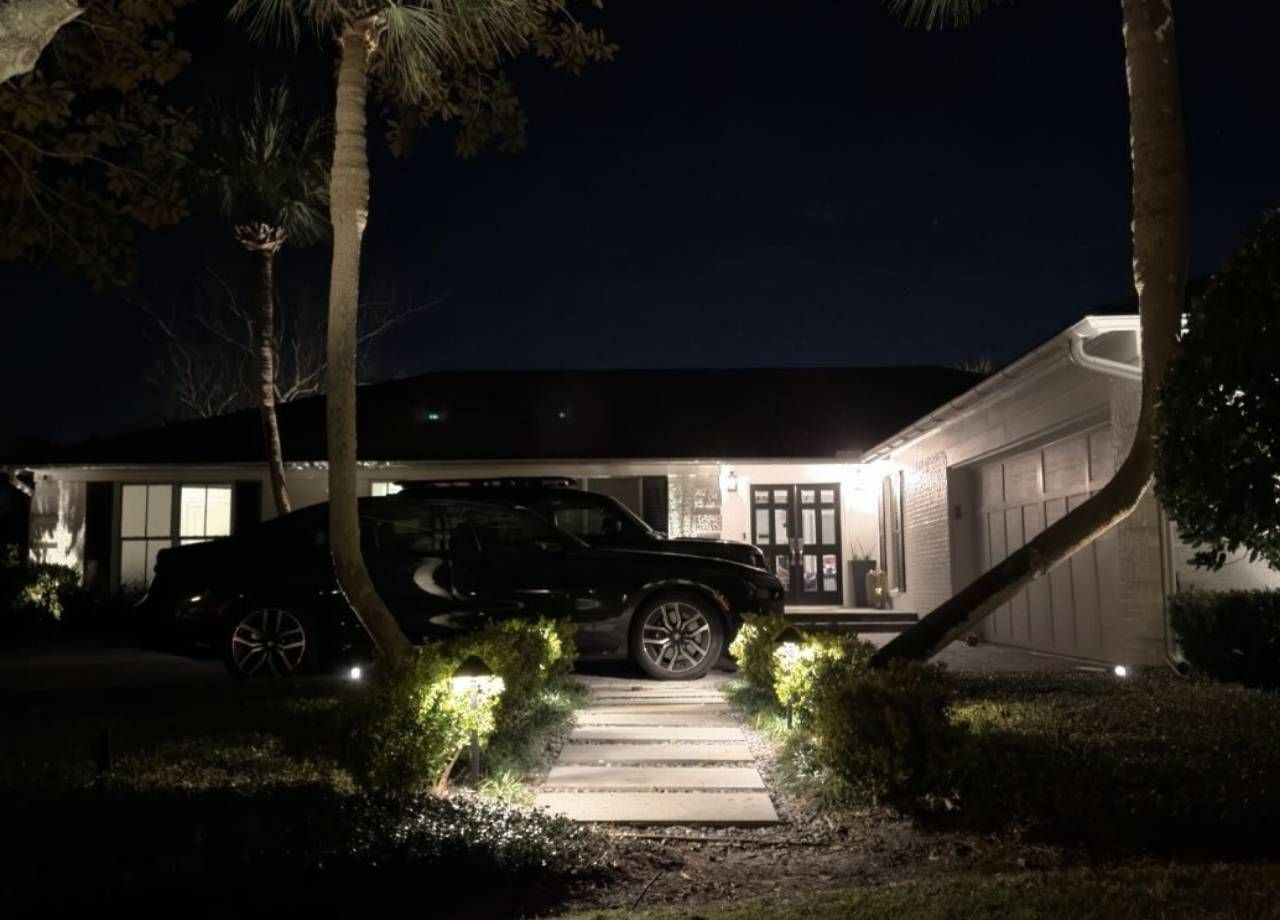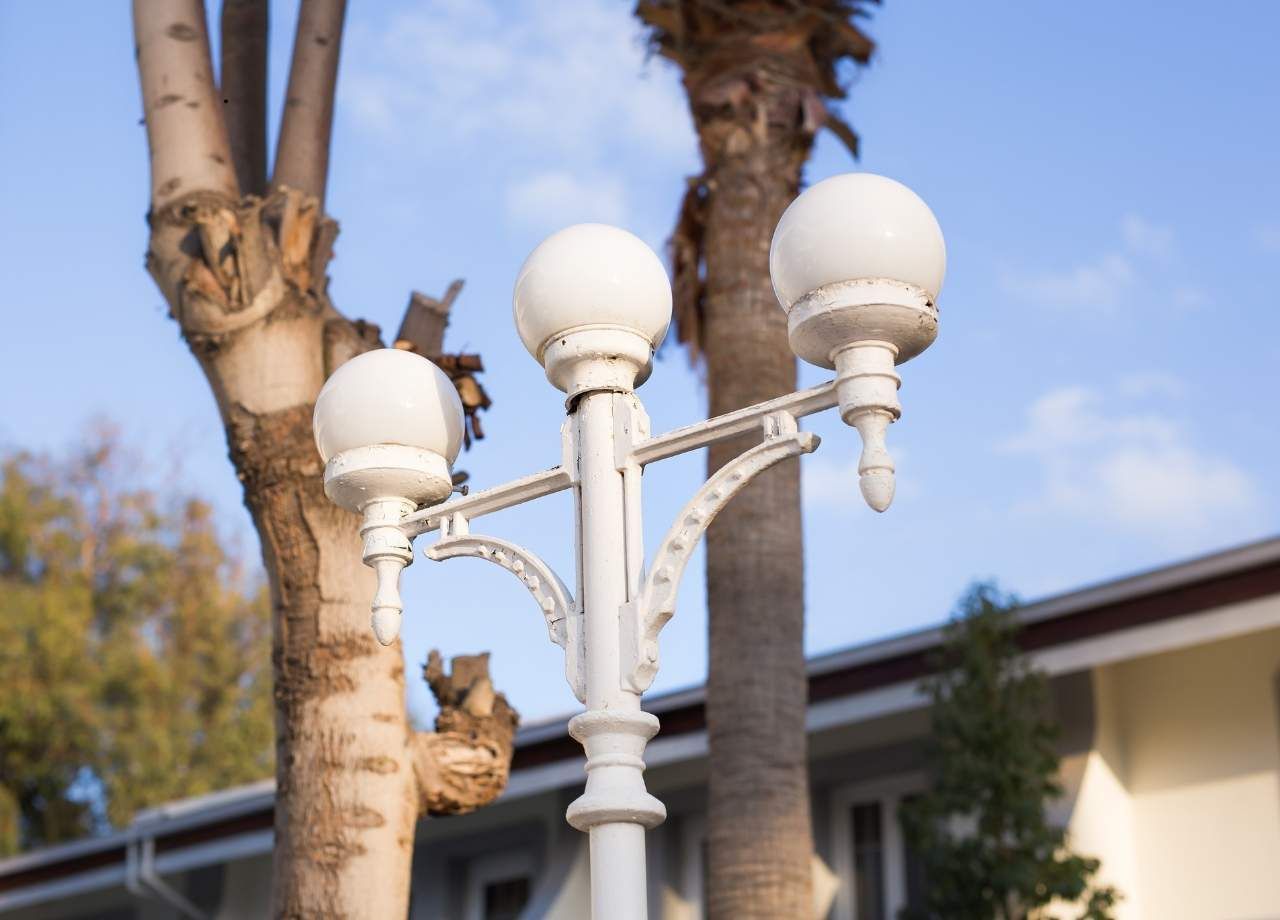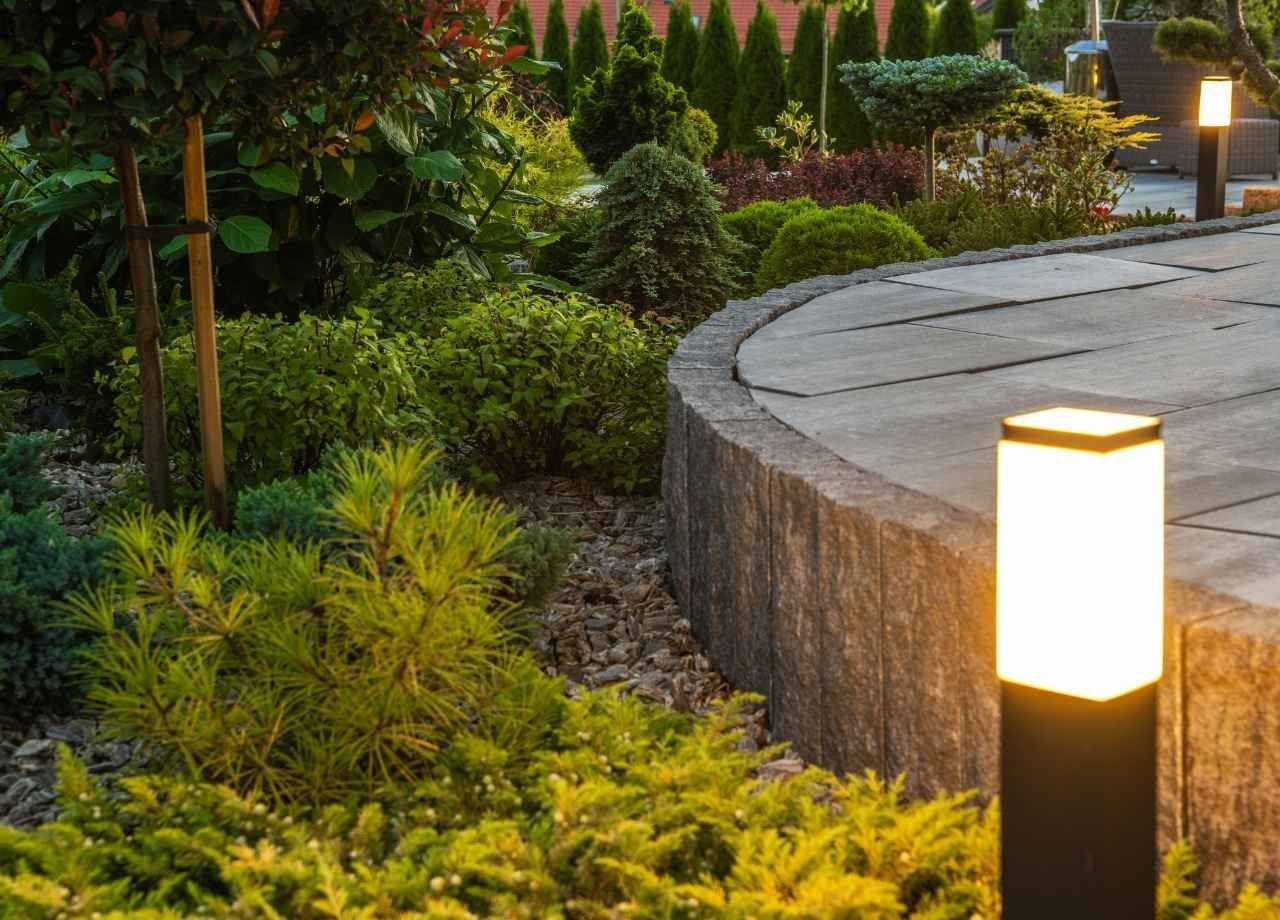Waterproof Outdoor Lighting: How to Choose Lighting That Withstands Florida Weather
Florida's climate is known for its beauty, but also its unpredictability. Coastal humidity, torrential summer storms, high winds, and salt-laden air all combine to create a punishing environment for anything left outside. Outdoor lighting systems are especially vulnerable if not selected and installed with Florida's weather in mind. That's why the right waterproof outdoor lighting isn’t just a luxury—it's essential. At Aloha Outdoor Lighting, we've helped hundreds of homeowners and businesses in Jacksonville weatherproof their outdoor spaces with lighting built to last.
Understanding Florida's Environmental Impact on Outdoor Lighting
Before choosing waterproof lighting, it helps to understand exactly what the lights are up against. Florida’s coastal regions experience high humidity nearly year-round. This moisture seeps into cheap lighting fixtures, corroding internal components, warping seals, and short-circuiting connections. During storm season, lights may endure heavy rains, flooding, and strong winds that rip fixtures from their mounts or compromise their enclosures.
Then there’s UV exposure. The sun in Florida is intense, and daily exposure degrades plastics, fades finishes, and weakens seals. On top of that, areas close to the coast must deal with salt corrosion. Salt spray from the ocean is highly conductive and corrosive, accelerating the breakdown of metal components and making low-grade fixtures fail prematurely.
These conditions are not occasional—they’re persistent. That’s why lighting solutions for Florida must go beyond a basic "water-resistant" label and meet much higher performance standards.
Look Beyond Water Resistance: Demand Full Waterproof Ratings
When shopping for outdoor fixtures, it’s common to see labels like "weatherproof" or "suitable for wet locations." However, those terms can be misleading. The most reliable way to gauge waterproofing is by checking the IP (Ingress Protection) rating.
IP ratings include two numbers. The first refers to protection against solids like dust, and the second deals with water. For Florida’s climate, outdoor lighting should have a minimum rating of IP65. This rating means the fixture is completely protected from dust and can handle jets of water from any direction. Fixtures near the ground or in direct rain exposure—like those on driveways, patios, or landscaping beds—should push even higher, toward IP66 or IP67.
IP67 fixtures, for example, are protected even when temporarily submerged in water. That extra layer of protection is crucial for areas prone to pooling or where irrigation systems are active. When rain falls hard and fast—as it often does in Jacksonville—it’s common for ground-mounted fixtures to sit briefly under water. Anything less than IP67 in those situations is asking for failure.
Material Matters: Corrosion Resistance Isn’t Optional
The physical build of the fixture is just as important as its IP rating. Coastal climates like Florida's demand materials that can handle salt corrosion and UV degradation. Powder-coated aluminum is a strong candidate, offering good resistance to corrosion without excessive weight. Marine-grade stainless steel is even better, though it comes at a higher cost.
Avoid standard steel or untreated metals, as they rust rapidly. Low-quality plastic housings may not corrode, but they often degrade quickly under UV light. Brass and copper are excellent options for high-end installations due to their natural corrosion resistance and durability. They also develop a patina over time that enhances their appearance without affecting performance.
Choosing the right lens material is just as critical. Tempered glass is far more resilient than acrylic or polycarbonate lenses, which tend to yellow or crack over time with UV exposure. Glass also provides a better seal against water ingress and resists scratches that can dull light output.

Sealing, Wiring, and Mounting: The Details That Make or Break a System
A fixture may claim to be waterproof, but poor installation can ruin even the best-rated light. It’s important to evaluate how the fixture is sealed. Silicone gaskets are far superior to rubber, which can crack and harden over time. Seals should be factory-installed, and the housing should close securely with compression fittings or waterproof locking mechanisms.
Wiring must also be properly rated for outdoor use. Look for fixtures that use marine-grade or direct-burial wiring, especially for in-ground or garden lighting. Connections should be protected with waterproof wire nuts or gel-filled splice kits.
Mounting matters too. Improperly anchored fixtures can loosen in high winds, allowing water to infiltrate through screw holes or mount gaps. Ground-mounted lights should be installed with proper drainage considerations to avoid long-term exposure to standing water. Wall or post-mounted lights should be sealed at the junction point with weatherproof caulk to prevent rainwater from entering.
LED Technology and Efficiency in Humid Conditions
LED lighting has become the standard for outdoor use, but not all LEDs are created equal. Many cheap LEDs suffer from heat buildup and moisture ingress that shortens their lifespan. Look for outdoor-rated LEDs with heat sinks designed to dissipate Florida’s ambient heat. Moisture-resistant coatings on circuit boards, such as conformal coating or potting, add an extra layer of protection.
Energy efficiency is another major benefit. Quality LED systems use a fraction of the electricity compared to traditional bulbs. Since Florida homeowners often run outdoor lights for hours at a time—whether for ambiance, safety, or security—the cost savings can be substantial over the life of the system.
Smart Controls and Automation for Storm Preparedness
Smart lighting systems can do more than just make your backyard glow. When paired with motion sensors, timers, or weather-based triggers, smart lighting adds convenience and storm protection. For instance, systems that detect power fluctuations or connect with weather forecasts can automatically power down sensitive components or adjust brightness to prepare for storms.
Some smart systems also allow remote monitoring and control. This is particularly useful during hurricane season, when homeowners might need to turn off or modify lighting remotely to prevent damage or conserve power.
Choosing a Partner Who Understands Local Demands
Not every lighting professional understands what it takes to build a system that holds up in Florida. At Aloha Outdoor Lighting, our team is based in Jacksonville and deeply familiar with the challenges posed by our local weather. We design and install waterproof lighting systems tailored to each property’s exposure, elevation, and environmental needs. From materials to mounting strategy, every choice is made to enhance both durability and design.
Final Thoughts
Waterproof outdoor lighting isn’t a one-size-fits-all purchase, especially not in a state like Florida. Between tropical storms, coastal moisture, and intense sun, your lighting system needs to be built from the ground up for endurance. The right IP rating, corrosion-resistant materials, smart design, and proper installation all contribute to lighting that not only survives but shines.
Whether you're lighting a beachfront backyard or a shaded garden in Jacksonville, your investment should perform year-round without fail. Choose wisely, and your lighting won’t just resist the weather—it will enhance your property through it all.

